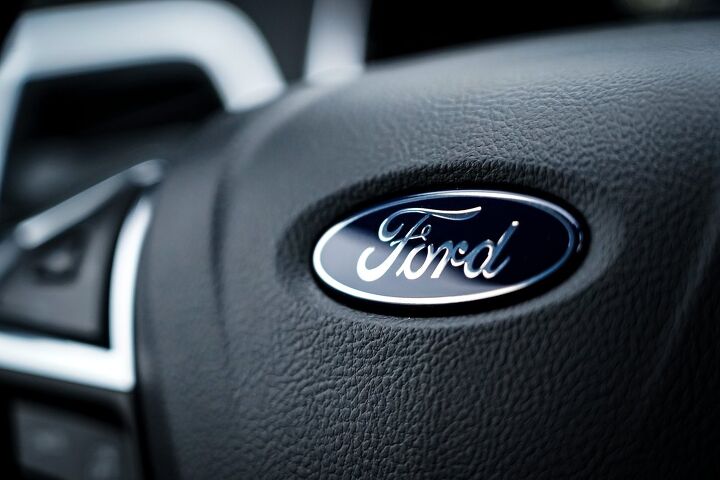Ford to Pull Back On Future Chinese Investments

Ford will be scaling down future investments in China, as the company’s chief executive has suggested that there will be “no guarantee” Western automakers can compete with local electric-vehicle rivals. This should have been obvious to American manufacturers who have historically been required to engage in partnerships with Chinese corporations just to sell within the region. But it also speaks to hardships Ford has endured while trying to break into the market.
The Blue Oval had already hinted that its strategy in Asia would be changing, especially in regard to China. But there will still be a lot of holdover business, regardless of how much it wants to scale back investments. The company has joint-venture partnerships with Jiangling Motors Group, Changan, and Lin Ho, and shares eight factories between them.
It also recently announced the next-generation Lincoln Nautilus for North America would be exported from China, a first for Lincoln. Despite the promised decline in future investment, the company seems interested in making the Lincoln brand a popular luxury marquee, similar to what General Motors managed to do with Buick.
However, Chinese EVs are fairly dominant in Central Asia and Ford seems to believe trying to compete with domestic brands and burgeoning EV firms will be exceedingly difficult.
“If you just reinvest in a new cycle of EVs in China, there is no guarantee, or no data, that would suggest the western companies win,” CEO Jim Farley told the Financial Times in an interview.
“The winners in China [in EVs] turn out not to be the [traditional carmakers],” he continued. “It’s actually all the EV brands like BYD and Tesla, Great Wall, SAIC, and Changan, who are winning.”
This also ties into an earlier announcement made by Blue Oval that suggested it would begin focusing on commercial vehicles while paying attention to what other manufacturers are doing in terms of battery technology — to see what works in China before diving back into electrified passenger vehicles.
From FT:
Global carmakers have been losing ground to domestic rivals that offer cheaper or better electric vehicles, threatening profits in the market that has become a core business for manufacturers such as Volkswagen, Mercedes-Benz or General Motors.
Several carmakers such as VW have vowed to boost spending in the country to try to claw back market share, but Ford plans to take a different approach, Farley said.
“We have been for the last couple of years, really looking carefully at our China business,” Farley said. “And now we have made up our mind where our strategy is going to be, and it will be a much lower investment, more focused investment.”
He declined to comment on local reports on Monday that Ford was preparing to cut 1,300 jobs in the country.
Ford seems laser-focused on margins right now. It has already culled smaller vehicles from the home market because they were less profitable than large SUVs and pickup trucks and has been doing the same in Europe — seeking a leaner, more competitive cost structure with fewer employees.
There are two ways to look at this. Ford could be viewed as playing things smart during a time of economic uncertainty, noting that trade tensions between the United States and China continue to cause problems for the business on both sides of the Pacific. But it could also be seen as a company running scared and trying to rebound from a lackluster 2022 by cutting costs wherever possible. Still, even the less-flattering assessment might be the correct play to make.
[Image: Nick Shoe/Shutterstock]
Become a TTAC insider. Get the latest news, features, TTAC takes, and everything else that gets to the truth about cars first by subscribing to our newsletter.

A staunch consumer advocate tracking industry trends and regulation. Before joining TTAC, Matt spent a decade working for marketing and research firms based in NYC. Clients included several of the world’s largest automakers, global tire brands, and aftermarket part suppliers. Dissatisfied with the corporate world and resentful of having to wear suits everyday, he pivoted to writing about cars. Since then, that man has become an ardent supporter of the right-to-repair movement, been interviewed on the auto industry by national radio broadcasts, driven more rental cars than anyone ever should, participated in amateur rallying events, and received the requisite minimum training as sanctioned by the SCCA. Handy with a wrench, Matt grew up surrounded by Detroit auto workers and managed to get a pizza delivery job before he was legally eligible. He later found himself driving box trucks through Manhattan, guaranteeing future sympathy for actual truckers. He continues to conduct research pertaining to the automotive sector as an independent contractor and has since moved back to his native Michigan, closer to where the cars are born. A contrarian, Matt claims to prefer understeer — stating that front and all-wheel drive vehicles cater best to his driving style.
More by Matt Posky
Latest Car Reviews
Read moreLatest Product Reviews
Read moreRecent Comments
- MacTassos Bagpipes. And loud ones at that.Bagpipes for back up warning sounds.Bagpipes for horns.Bagpipes for yellow light warning alert and louder bagpipes for red light warnings.Bagpipes for drowsy driver alerts.Bagpipes for using your phone while driving.Bagpipes for following too close.Bagpipes for drifting out of your lane.Bagpipes for turning without signaling.Bagpipes for warning your lights are off when driving at night.Bagpipes for not coming to a complete stop at a stop sign.Bagpipes for seat belts not buckled.Bagpipes for leaving the iron on when going on vacation. I’ll ne’er make that mistake agin’.
- TheEndlessEnigma I would mandate the elimination of all autonomous driving tech in automobiles. And specifically for GM....sorry....gm....I would mandate On Star be offered as an option only.Not quite the question you asked but.....you asked.
- MaintenanceCosts There's not a lot of meat to this (or to an argument in the opposite direction) without some data comparing the respective frequency of "good" activations that prevent a collision and false alarms. The studies I see show between 25% and 40% reduction in rear-end crashes where AEB is installed, so we have one side of that equation, but there doesn't seem to be much if any data out there on the frequency of false activations, especially false activations that cause a collision.
- Zerocred Automatic emergency braking scared the hell out of me. I was coming up on a line of stopped cars that the Jeep (Grand Cherokee) thought was too fast and it blared out an incredibly loud warbling sound while applying the brakes. I had the car under control and wasn’t in danger of hitting anything. It was one of those ‘wtf just happened’ moments.I like adaptive cruise control, the backup camera and the warning about approaching emergency vehicles. I’m ambivalent about rear cross traffic alert and all the different tones if it thinks I’m too close to anything. I turned off lane keep assist, auto start-stop, emergency backup stop. The Jeep also has automatic parking (parallel and back in), which I’ve never used.
- MaintenanceCosts Mandatory speed limiters.Flame away - I'm well aware this is the most unpopular opinion on the internet - but the overwhelming majority of the driving population has not proven itself even close to capable of managing unlimited vehicles, and it's time to start dealing with it.Three important mitigations have to be in place:(1) They give 10 mph grace on non-limited-access roads and 15-20 on limited-access roads. The goal is not exact compliance but stopping extreme speeding.(2) They work entirely locally, except for downloading speed limit data for large map segments (too large to identify with any precision where the driver is). Neither location nor speed data is ever uploaded.(3) They don't enforce on private property, only on public roadways. Race your track cars to your heart's content.


































Comments
Join the conversation
Businessmen have been trying to get rich by selling (fill in the blank) to China for a couple centuries now, and it has never worked. It doesn't matter if it was an emperor, a republic, a military dictatorship, or the communist party, free enterprise and the rule of law are alien concepts there.
"Thanks so much for helping us get our auto parts industry off the ground. And now our auto final assembly industry too. Don't let the South China Sea hit you on the way out. Byeeeeee....."